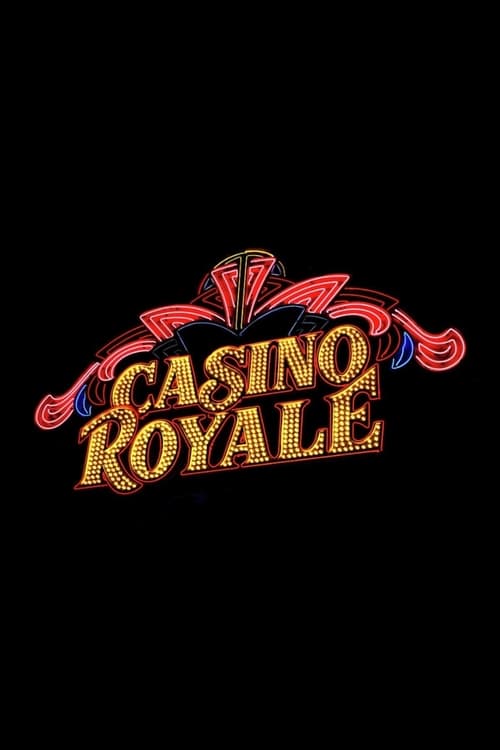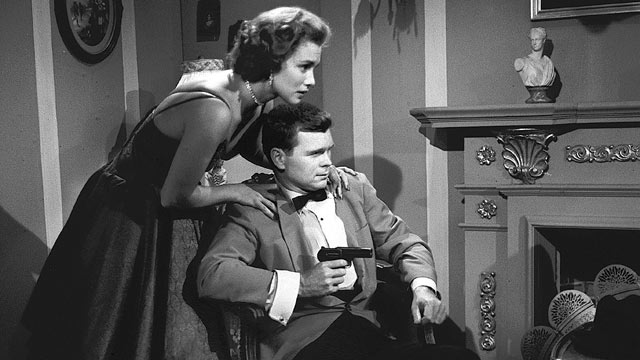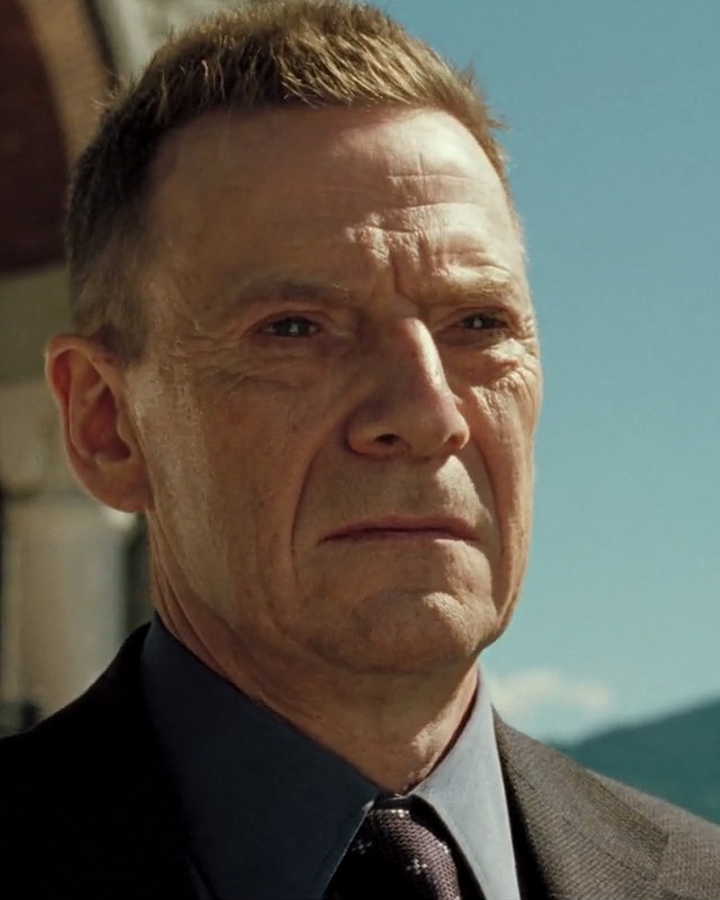Casino Royale 1954 Deutsch
| . | Since 1959James Bond 007 Museum Sweden, Nybro. |
Contact: 007museum@telia.com Phone+4648112960 Open Daily 10-17 Sat 10-14 MediaTo do and seeBuy/Köp infoLinks
Directed by William H. With William Lundigan, Barry Nelson, Peter Lorre, Linda Christian. American spy James Bond must outsmart card wiz and crime boss Le Chiffre while monitoring his actions. Casino Royale (1954) was the bizarro version of Bond. Fans of the franchises will be taken aback by this episode and gives everyone a window to what an American version of the character would have looked like. This version does pale in comparison to what proceeded it. Allowances need to be made for Casino Royale (1954). It was adapted for a TV. Casino Royale is the first novel by the British author Ian Fleming.Published in 1953, it is the first James Bond book, and it paved the way for a further eleven novels and two short story collections by Fleming, followed by numerous continuation Bond novels by other authors. Ian Fleming's CASINO ROYALE, starring; Barry Nelson in 1954. History of Casino Royale: This is the first ever screen adaption of a Bond novel, made in 1953. 'Casino Royale (1954-TV)' is the first unofficial Bond TV movie. Gregory Ratoff bought a six month rights and paid Ian Fleming $1000 in 1954 to adapt his first novel, 'Casino Royale', into an one-hour television adventure.
Casino Royale 1954 the Columbia Broadcasting System or CBSTelevision purchased Casino Royale for a one time live presentation ontheir new anthology program Climax Mystery Theater. They paid Fleming$1000.00.
(EpisodeCredited cast)
| publicity shot of Barry Nelson for “My Favorite Husband” – the TV series he toplined the year before playing Bond. Nelson’s Bond is not the secret agent we’ve subsequently come to know; he’s an American that works for “Combined Intelligence” and orders Scotch-and-waters (there are no martinis to be found). Naturally, the brutal passages of Fleming’s novel are watered down for 1950s television, and so genital torture becomes toe torture. The episode became a forgotten piece of the Bond saga until years later, when a man named Jim Schoenberger bought a 16mm kinescope (the process of filming a television monitor to preserve a live show for posterity) of the program – reportedly at a flea market sometime in the 1970s. According to Bond authority and Cinema Retro magazine publisher Lee Pfeiffer, Schoenberger bought the 1954 “Casino Royale” as an unmarked 16mm canister at the flea market, at first not knowing what he had. Bond book author Steve Rubin understands it slightly differently. “The canister was labeled as the 1967 ‘Casino Royale,’” says Rubin. “But he looked at the print and saw it was black and white.” In any case, Schoenberger bought the “Royale” kinescope, and the episode was soon to get its first showing in decades. Around the time Rubin’s book “The James Bond films: A Behind the Scenes History” was published in 1981, the author organized the James Bond Weekend at the Playboy Club in Century City. He decided to screen the 1954 “Casino Royale” and invite Barry Nelson. “He was a little surprised,” Rubin says about the star’s reaction to the invite. Although Nelson wasn’t actively associated with the Bond legacy at the time, neither had he fallen into total obscurity; the actor had recently completed the hotel-manager role for Stanley Kubrick’s “The Shining.” (Nelson is the fella who hires Nicholson.) The “Climax” episode became available as a public-domain video dupe, and Pfeiffer says the 16mm kinescope was donated to the Museum of Television and Radio. But in 1998, Pfeiffer finally gave the ‘54 “Royale” the royal treatment, with a handsomely packaged Collector’s Edition, introduced by Pfeiffer himself. “There were two versions floating around out there,” says Pfeiffer, “And I realized I had the one with the complete ending.” So he released the Collector’s Edition through his company Spy Guise Entertainment. “I was able to do it pretty cheaply. We shot the intro in my basement.” A short time after the “Climax” episode aired, Fleming sold full “Royale” rights for $6000 (buying a car with the spoils), and it reached the big screen in 1967 as a goofy, spoofy movie with little relation to the novel. The 1954 “Royale” was included as an extra on the 2002 DVD release of the 1967 version. (And Rubin is now working with Fox to create the extras package for another DVD edition of “Royale” ‘67.) The official Bond film series – as produced by Eon Productions – acquired the rights to Fleming’s inaugural Bond novel in the late 1990s. Now it’s been made by Eon as the 21st official Bond film, with Daniel Craig in the tuxedo and a newly created adventure preceding the casino action. So in some ways, the original “Casino Royale” adaptation is still the most faithful (and it’s the only to include the memorable cane-gun scene). As for “Jimmy” Bond, the still-living Barry Nelson gets the occasional fan letter but considers his Bond connection to be “more of a trivia question,” according to Pfeiffer. The current issue of Cinema Retro features an interview with the actor. |
| Linda Christian, Actress: The Devil's Hand. Born Blanca Rosa Welter, her father was an executive ...Valerie Mathis. – Casino Royale (1954) … Valerie Mathis... Born Blanca Rosa Welter, her father was an executive with an important oil company and the future Linda Christian followed him from country to country: South Africa, Romania, Germany, France, Switzerland, England, Palestine. This was beneficial in that the little girl - a very good pupil at school - was eventually able to speak seven different foreign languages... Linda Christian, a 1940s Hollywood actress nicknamed 'anatomic bomb' by Life magazine for her stunning looks and famous for her marriage to actor Tyrone Power, has died aged 87, her daughter said here Saturday. Romina Power told journalists in Rome that her mother, who had been suffering from colon cancer, died in Palm Springs on Friday. Born in 1923 in Mexico, Christian — whose real name was Blanca Rosa Henrietta Stella Welter Vorhauer — was known for playing Mara in the last Tarzan film starring Johnny Weissmuller in 1948. She was also the first James Bond girl in the 1954 television adaption of 'Casino Royale'. But she was perhaps most famous for her seven-year marriage to 20th Century Fox star Tyrone Power, with whom she had two children. Thousands of people flocked to Rome to celebrate their wedding in 1949 in the Santa Francesca Romana church, a stone's throw from the Colosseum. The newlyweds were later received by Pope Pius XII. | Linda Christian, torontosun.com/2011/07/24/first-bond-girl-dies | |
| Linda Christian Berry Nelson Valerie Mathis James Bond/Jimmy Bond | Barry Nelson taken one year before he would play James Bond. Barry Nelson died 13th April 2007 Casino Royal 1954 trailerBarry Nelson (1917-2007) | |

Casino Royale 1954 Deutsch Englisch

Director: Watch the Casino Royale trailer from 1954 | Runtime:48 min / USA:58 min / USA:50 min / USA:60 minLanguage:EnglishSound Mix:MonoCertification:USA:Not Rated(video) / USA:Not Rated(VHS) / USA:Unrated(DVD) / UK:U(VHS) / Australia:PG(video rating)Filming Locations:CBS Television City - 7800 Beverly Blvd., Fairfax, Los Angeles, California, USAmoreTrivia:The only James Bond movie which is scoreless and without a soundtrack. moreGoofs:Revealing mistakes: A prop gun went off accidentally right at the beginning of the show. Four shots are heard but only three gunshot markings are seen on the casino building. moreQuotes:James Bond: [James Bond in bathtub. Zuroff is tying rope on him. Le Chiffre, Valerie, Basil enter bathroom]Le Chiffre: All right Mr Bond where's that money? Look Mr Bond, as you should know by now I... I'm quite without mercy and if you continue to be that obstinate, I... I'll have to torture - - - you'll be tortured to the edge of madness. Believe me. You have no hope whatsoever. You hear. None [Turns to face Valerie] Le Chiffre: Nor has she. |
Bond Reaches Climax
In 1954, the Columbia Broadcasting System or CBSTelevision purchased Casino Royale for a one time live presentation ontheir new anthology program Climax Mystery Theater. They paid Fleming$1000.00.
Barry Nelson as Jimmy 'Card-Sense' Bond andPeter Lorre as Le Chiffre.
The $25,000 live production aired on Thursdaynight October 21, 1954 at 8:30 EST. It starred Barry Nelson as American CombinedIntelligence Agent ‘Card Sense’ Jimmy Bond. Veteran actor Peter Lorre ishonored by being the first Bond villain, Le Chiffre, and Linda Christian playedthe first Bond girl Valerie Mathis. Although the production was basically astage play, many of Fleming’s elements from the novel remained. The classiccard game against Le Chiffre is obviously there, however it is refreshing to seethe scene where Basil, one of Le Chiffre’s henchmen, holding up his walkingcane revolver against Bond’s spine only to have Bond foil the henchman’smurderous plans by falling backwards on top of the cane. A definite highlightfrom the novel.
Bond faces danger with LeChiffre's henchman who has a concealed gun inside his walking cane.
Linda Christian plays Valerie Mathis enjoys an intimate moment with Bond.
Just before airtime, the producers realized thesixty-minute production was over by three minutes.
'So they went through and cut three wordshere, a line there, a half-a-word here, and their script ended up looking like abad case of tic-tac-toe.' recalled Barry Nelson in a Starlog interview from1983. I tell you it was so frightening that when I entered (the scene) my onlythought was, ‘Oh, God, if I can only get out of this mother!’' 'Iwas very dissatisfied with the part, I thought they wrote it poorly. No charm orcharacter or anything.'
Peter Lorre agreed and saw Nelson so nervous withall the changes to the script that he commented, 'Straighten up, Barry, soI can kill you!'

For decades afterwards, Bond fans had wonderedwhy Barry Nelson was chosen for the role. However, hismain reason for accepting the part was simply to work with Peter Lorre. Nelson was a great admirer of Lorre's work and felt he might never get anotheropportunity to work with him again.
The live performance was considered lost on thepretense that it was not filmed on a 16mm kinescope telecine. However, in1981 a Chicago airline executive named Jim Schoenberger discovered, whilesifting through old film canisters of presumably the 1967 version of CasinoRoyale, the black and white film strip. Quickly he ran the filmthrough a projector and found a pristine copy of the 1954 production. Thefilm had its first public performance at the James Bond Weekend in July 1981. Barry Nelson was also in attendance.
VHS and DVD copies are available including oneVHS version from Spyguise that hasan additional 60 seconds where Le Chiffre is shot not once, but twice beforesuccumbing to an eternal sleep.
As if the future of the TV production of CasinoRoyale’s fate was foreshadowed in the first few seconds of the liveproduction, when a prop gun misfired, so would the novel for the next fiftyyears misfire on the theater screen.
From A Russian, With Love?
In 1955, flamboyant Russian actor and directorGregory Ratoff was in Cairo, Egypt. According to the story by screenwriterLorenzo Semple, Jr. (he would also pen the 1960's Batman TV series andthe screenplay to Never Say Never Again) , 'Gregory had been actingin a film titled The Royal Bed, which was about King Farouk. It was a bigrip-off. Everyone was trying to rob as much money as possible from the Italianbackers, who weren’t allowed into the country. Gregory stole 10,000 pounds in cash,and needed a way to get it out of Egypt. He got down on his knees at theCairo airport and prayed: ‘As God is my witness, if I get through with thiscash, I’m going to buy a TIME magazine when we land in Athens, and use themoney to purchase film rights to the first book I read a review of’.'
The book turned out to be Casino Royale.
Ratoff borrowed money from then- head of 20thCenturyFox, Darryl Zanuck and long time friend and producer Charles K. Feldman and paidFleming $6000.00 for the film rights. During the next five years, Ratoff triedto bring James Bond to the silver screen - unsuccessfully.
'I was a bright young guy fresh out ofcollege.' said Semple, 'Gregory hired me to write the screenplay. Iworked without pay, but it was a great deal of fun. We traveled around the worldwhile he gambled in casinos, supposedly doing research. He was too old-fashionedto work, so I would sit at the typewriter for four or five hours a day inwhatever hotel we were staying in, and just turn out pages and pages of scenes.I probably wrote several scripts during a year of traveling throughout Europe.Gregory thought the story was too silly. He said: ‘Nobody believe this JamesBond, so we make him into woman. Then, we make great movie.’ The idea was towrite it as a vehicle for actress Susan Hayward.'
Flamboyant actor and director Gregory Ratoffenvisioned actress Susan Hayward as secret agent Jane Bond.
On December 14, 1960, Gregory Ratoff died fromleukemia and his widow was left holding the proverbial empty bank account. Shewas forced to sell any film properties her late husband owned to get out of debt.Feldman was one of the creditors to the Ratoff estate. The former lawyer turnedtalent scout and producer was handed the film rights to Casino Royale.
A Cry to Battle
Feldman was one of Hollywood’s most intelligentand cultivated talent agents. Handsome, tanned and sophisticated, He was thefull definition of success. His yearly salary in 1933 (at the height of theGreat Depression) was approximately $500,000 before taxes. His company, FamousArtists, specialized in bringing new and aspiring talent to the studio system.His 300 client list included John Wayne, Richard Burton, Greta Garbo, TyronePower, William Holden, George Raft, Lana Turner and Marilyn Monroe.

Born April 26, 1905 in New York City. One of sixchildren whose family name was Gould. Left as an orphan, he was adopted by theSamuel Feldman family of Bayonne, New Jersey. The family moved to California afew years later. By college, Feldman took up law at the University of Californiaat Los Angeles. His first contact with the movie industry occurred during schoolvacations when he worked at the studios. One of his earliest jobs was as anassistant cameraman for director John (The Searchers) Ford.

Feldman started his own law practice in Hollywoodand specialized in the contractual aspects of the film industry. He came up withthe idea of creating jobs for his clients instead of fighting for the fewavailable ones. This was the origin of what became known as the ‘package deal’.For example, after buying a story idea for as little as $2,500, he found anunemployed writer, actor, director and producer. He once said, 'I didn’tgo into competition with the studios. I just bought what they didn’t want orhad passed up. I would wrap a story up, then stick an important name on thelabel, usually the name of a star or top director. The rest was easy. Noproducer in his right mind would turn down a deal like that.'
During his years as a producer, Feldman wouldbring to the screen films that Hollywood was afraid to touch. Films suchas A Streetcar Named Desire, The Glass Menagerie, The SevenYear Itch, and What's New, Pussycat?
After listening to an inspiring speech in 1942 bythen U.S. Vice President Henry Wallace, Feldman had a brainstorm of an idea. He conceived an episodic film that would highlight war fronts during WWII. Thesix hour film was to be titled 'Battle Cry' and enlisted anarmy of writers including Ben Hecht and Pearl Buck. He even tried to convincethe studio heads to make this film on a non-commercial charity basis. Manyfamous actors and actresses agreed to volunteer their time for this epicproduction and were promised that they would only work 12 days. A list of famousactors included Humphrey Bogart, Lauren Bacall, Gary Cooper, Bette Davis, IdaLupino, Marlene Dietrich, Charles Boyer, Claudette Colbert, Leslie Howard,Ingrid Bergman, Irene Dunne, Randolph Scott, Merle Oberon, Jean Arthur, MargaretSullivan, John Garfield, Ann Sheridan, and George Raft were all at one timecommitted. Film directors Lewis Milestone, Alexander Korda, and Howard Hawksamong others were being touted to direct their own segments. Only one scene wasfilmed and that was of a burning wheat field in upper state California beforeJack Warner sent word to shut down production because of escalating cost.
Feldman’s epic idea may have gone up in smokebut it would eventually find its way into Casino Royale 25 years later.
Feldman had many dalliances, according to sources,with some of Hollywood’s most glamorous ladies. He often gave lavish gifts tohis clients and kept close ties to studio moguls such as David O. Selznick, JackWarner, and Darryl Zanuck. Only one studio head refused to do business withFeldman - MGM’s Louis B. Mayer.
In 1933, Feldman met actress Jean Howard at aparty in Beverly Hills. According to Ms. Howard, it was ‘love at first sight.’Unfortunately, she was also the girlfriend to Mayer and would cause such a stirthat Mayer would forbid any business transactions with Feldman and FamousArtists.
Charles K. Feldman, Jean Howard, and LouisB. Mayer. The love triangle that eventually affected Cubby Broccoli's workrelationship with MGM Studios.
It was during this time that one of Feldman’sassociates, and aspiring producer, was escorting several new talented actorsonto the MGM lot. This young associate was 24 year old Albert Romolo (Cubby)Broccoli and he was about to learn one of Hollywood’s biggest lessons.
According to Broccoli’s autobiography Whenthe Snow Melts, he was there to meet with producer Pandro Berman. Thereceptionist allowed the actors to enter Berman’s office, but not Cubby. Hewas barred from the studio lot. Feeling dejected and confused, he returned toFamous Artists and explained the situation to Feldman, who remained silent.Eventually Cubby discovered the truth about his boss and Mayer, and would workon and off with Famous Artists thru the 30s, 40s and early 1950s.
Copyright © 1959-2017 www.007Museum.com All Rights Reserved |
Casino Royale 1954 Deutschland
James Bond Materials© 1962 - 2017 United Artists Corporation and Danjaq, LLC. 007 Gun Logo© 1962 United Artists Corporation and Danjaq, LLC. 007 Gun Logo, Iris Logo,
JAMES BOND and all other James Bond related trademarks - Danjaq, LLC. All Rights Reserved. Copyright



